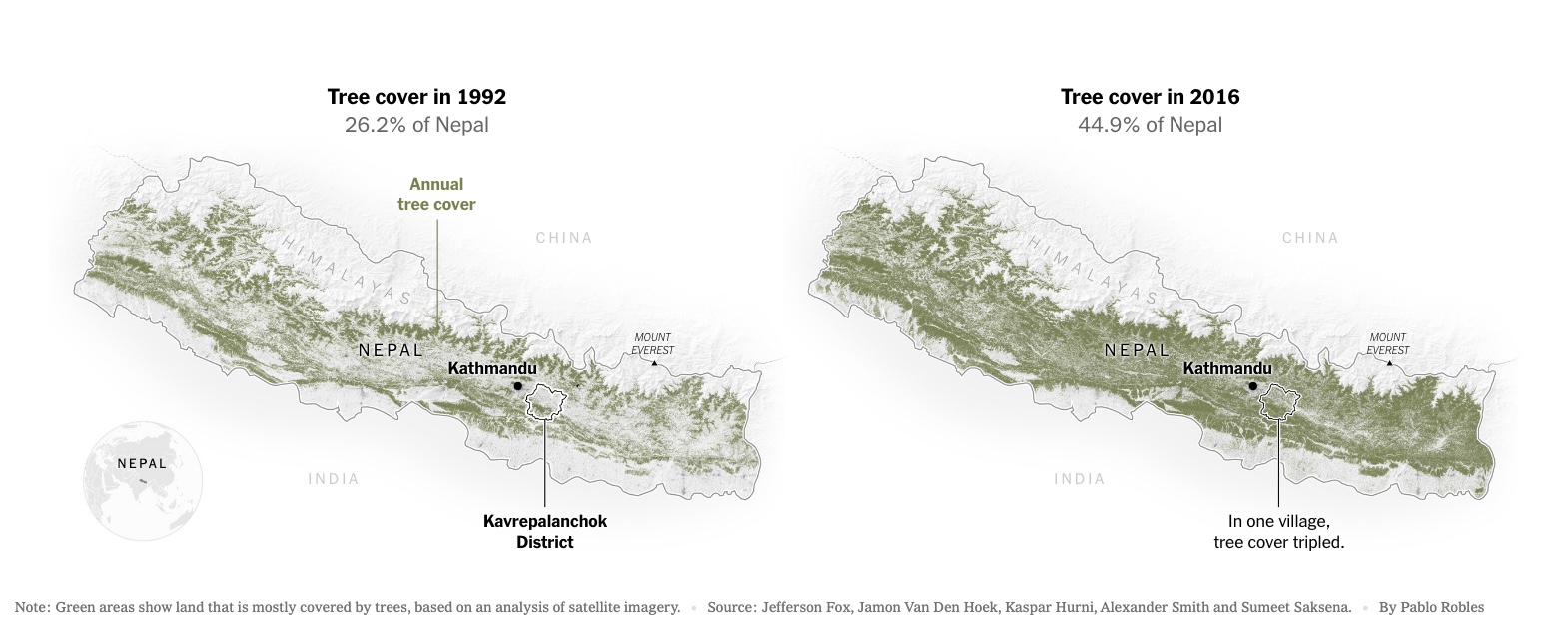NEPAL, November 11, 2022 (New York Times): Across Nepal, thanks to a radical policy adopted by the government more than 40 years ago. Large swaths of national forest land were handed to local communities, and millions of volunteers were recruited to protect and renew their local forests, an effort that has earned praise from environmentalists around the world. But the success has been accompanied by new challenges — among them addressing the increase in potentially dangerous confrontations between people and wildlife. Community-managed forests now account for more than a third of Nepal’s forest cover, which has grown by about 22 percent since 1988, according to government data. Independent studies also confirm that greenery in Nepal has sprung back, with forests now covering 45 percent of the country’s land. “When the forests were common property, people abused them,” said Jefferson Fox, a senior fellow at the East-West Center in Honolulu and a principal investigator on a NASA-funded study that found Nepal’s tree cover had doubled between 1992 and 2016. “Now, you’ve got the community saying, ‘No, you don’t go there!’ So, the trees are coming back.”
Back in the early 1980s, the government couldn’t persuade people to stop cutting trees for farmland and for firewood. The deforestation made floods and landslides more frequent, alarming the country’s leaders. What followed was an enormous replantation effort that was bolstered by foreign aid. The challenge now is to sustain this fragile recovery. For the community foresters, that involves guarding their forests from the timber mafia, poachers and from nature itself. The forests also are crucial to the finances of the government of Nepal, one of the poorest countries in South Asia. It is set to receive billions of dollars for its work on forest conservation and climate protection in the years to come, Ramsahaya Prasad Yadav, who served as a forest minister until July, said in an interview. Nepal is expecting a $7.4 billion package from a group led by the British government to “build back greener from Covid-19” and about $300 million from Norway, the United States and Britain, among others, for helping reduce global emissions.
More of this lengthy article can be read at source.
https://www.nytimes.com/2022/11/11/world/asia/nepal-reforestration-climate.html
A daily summary of world news for Hindus and non-Hindus alike

